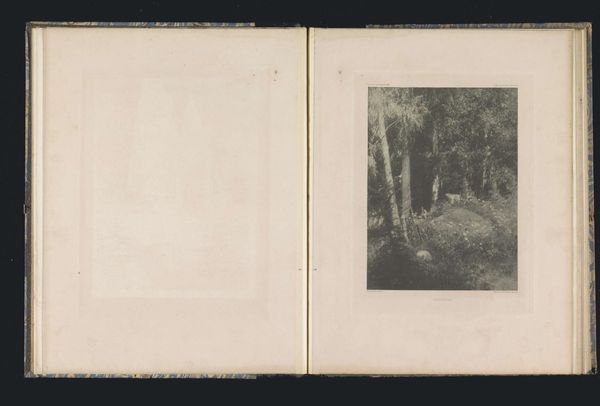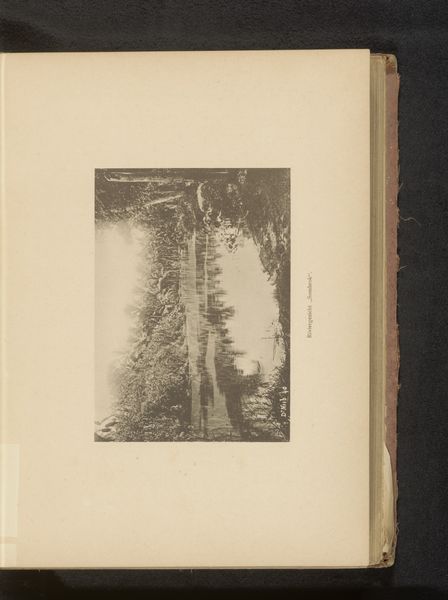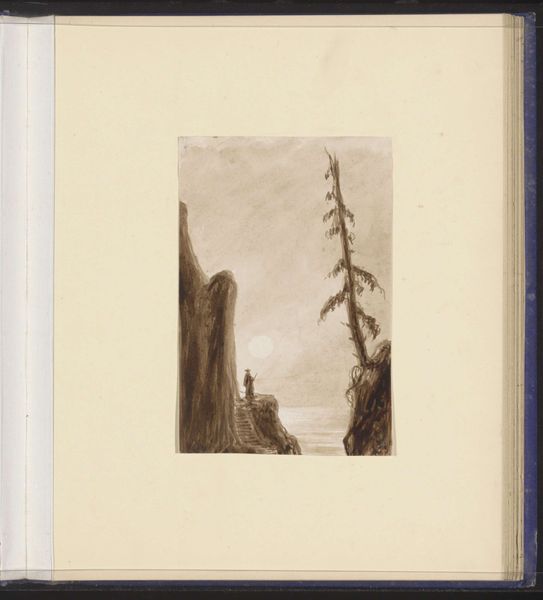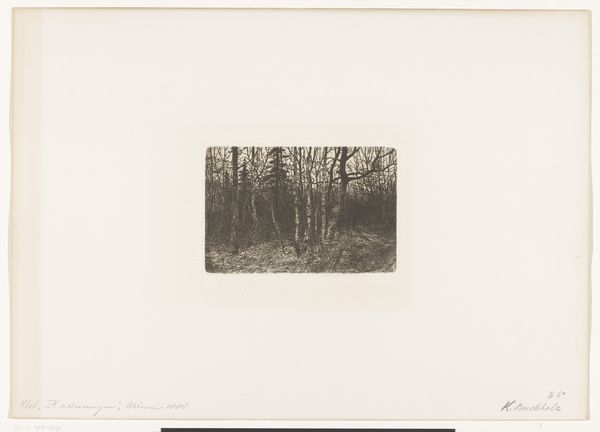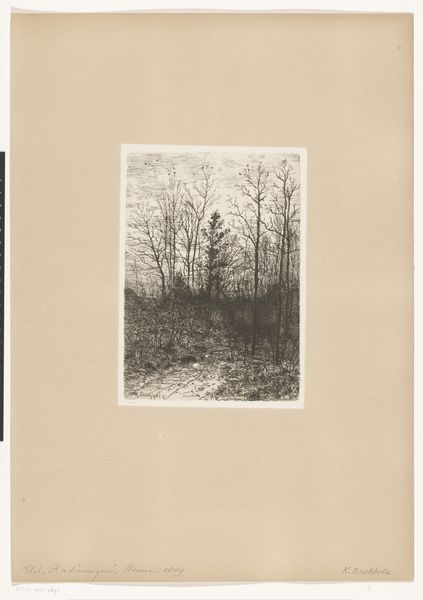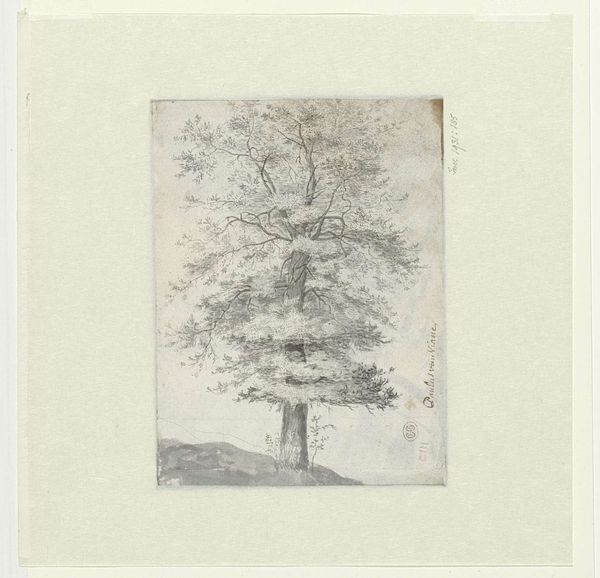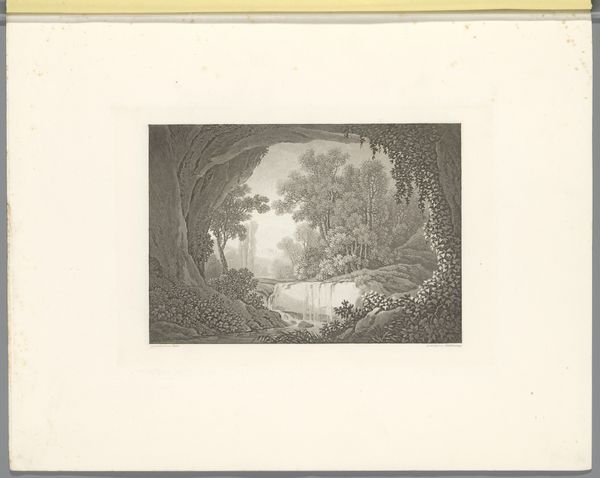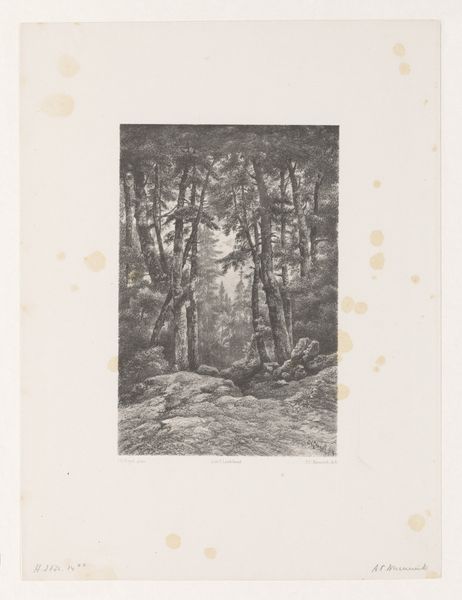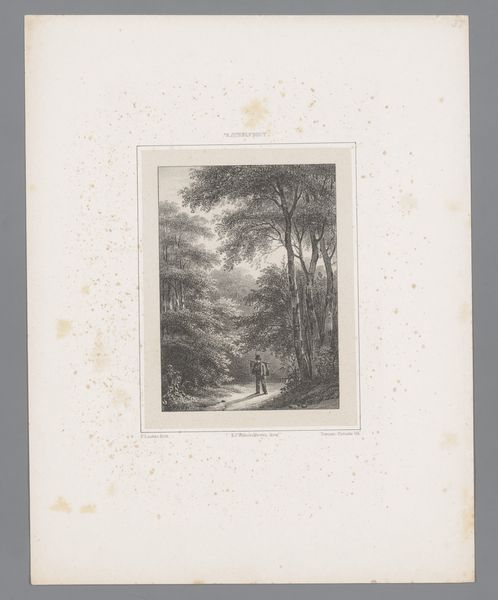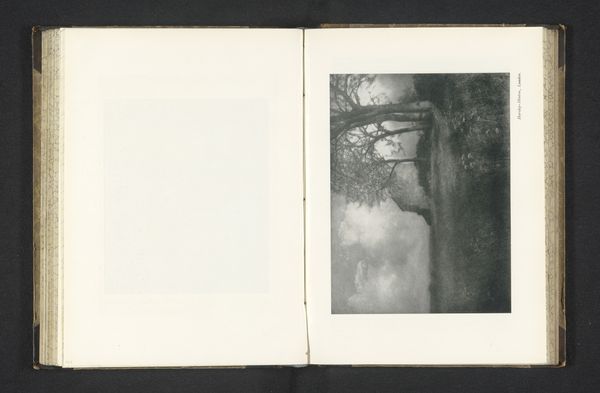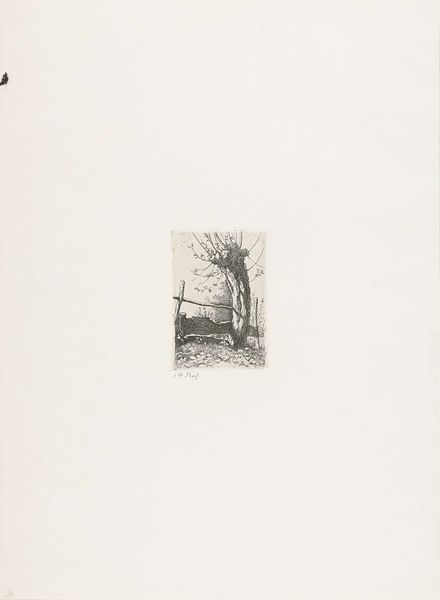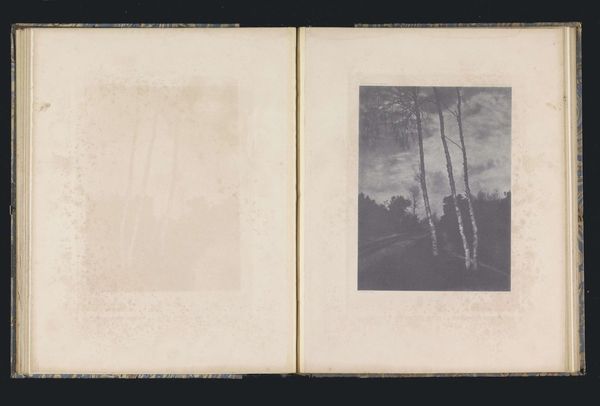
Dimensions: height 104 mm, width 89 mm
Copyright: Rijks Museum: Open Domain
Editor: This is "Wandelaar op een bospad" by Alexander Ver Huell, created in 1882. It's a watercolor and pencil drawing on paper. It has a quiet, contemplative mood to me, and the lone figure seems dwarfed by the imposing forest. What do you see in this piece? Curator: It is interesting that you mention the lone figure dwarfed by the imposing forest. For me, the artwork invites a reading centered on the interplay of individual agency and the overpowering force of nature and societal expectations. Considering this was made in 1882, we need to ask, who has access to nature and its resources? How is the representation of nature coded with specific gender and class expectations? What power dynamics are in play when an artist chooses this subject? Editor: That’s fascinating, I hadn’t considered it from a power perspective. So you're suggesting that this seemingly simple landscape hints at deeper issues of access and societal roles? Curator: Precisely. This is not just a pleasant nature scene; it reflects the social stratification of the era. How might the wanderer’s gender or class shape his or her experience in this space? How does this romantic vision of the landscape possibly reinforce or subvert those norms? Editor: I see what you mean. By examining those questions, we move beyond just admiring the scenery and start to unpack the complex relationship between art, nature, and society. Curator: Exactly! And we realize art provides valuable documents for discussing political context, which, even through nature depictions, offer insight into cultural and historical power structures. Editor: It changes how I see landscape art entirely, knowing there are embedded cultural markers within each artistic choice! Curator: Indeed, there are more ways to see then we think at first!
Comments
No comments
Be the first to comment and join the conversation on the ultimate creative platform.

